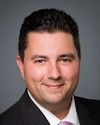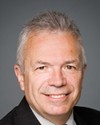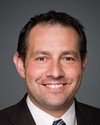Mr. Speaker, I am delighted to rise today to participate in the debate on the legislation in front of us, which would create a first in Canada, a new national urban park in the greater Toronto area.
The first thing I want to do is acknowledge all the people who have worked tirelessly on this issue for over two decades. Literally tens of thousands of Canadians in the greater Toronto area and the Golden Horseshoe have been involved with this initiative.
This started some 25 years ago, as members opposite and on this side of the House have mentioned, when agricultural lands and open spaces began to be paved over by the ever-growing sprawl in the greater Toronto area. At that time many concerned citizens decided to get involved, become activists, petition and call upon municipal, provincial and federal governments to preserve this important part of Canada's biodiversity.
It started with the involvement of those citizens in the 1980s that then led to an adoption in the House in the 1990s of a motion that minister Pauline Browes introduced and was continued with by people like Glenn De Baeremaeker on Toronto's City Council.
More recently, in the 1990s, work was done by the Rouge Park Alliance, which was chaired by Mr. Alan Wells, past chief administrative officer of the Region of York, appointed by premier McGuinty to chair that alliance. I had the privilege of sitting on that alliance with a number of municipal and provincial stakeholders in recent years and doing very important work with Mr. Wells. Minister Flaherty appointed me to that alliance in June of 2008 and I worked with that group for about five years.
When I was first appointed to the Rouge Park Alliance, I had no idea about this gem in York region, now the city of Markham, and the city of Toronto. As an MP from the west part of the GTA, I had no idea that this ecological gem existed and what is even more surprising is that I lived in the city of Toronto for 15 years and I had no idea, as a Torontonian then, that this existed on the eastern part of the reaches of the city. After I was appointed to the Rouge Park Alliance, I quickly became aware. The scales were dropped from my eyes and I became aware of this precious area in the eastern part of the GTA.
The Rouge Park Alliance and its members worked together for a period of about a year and a half to take a look at the future of the park. There were many challenges that the park and the area faced. One was a very complex system of governance that had no legal standing to affect outcomes, a multiplicity of players and interests that all had competing agendas. It was decided that we needed to come forward with a new governance model.
Therefore, the Rouge Park Alliance spent a year and a half consulting dozens and dozens of stakeholders about the future of the park. That culminated in a report that was adopted in early 2010 by the Rouge Park Alliance, adopted unanimously I might add, that recommended the creation of a national urban park in the Rouge watershed. That is the genesis of how we got to where we are today.
The legislation in front of us is the result of broad consultations. There are two sets of consultations in particular I would like to focus on to illustrate the number of people and the depth of the consultations.
The first set of consultations were held between 2008 and 2010 by the Rouge Park Alliance itself. The Rouge Park Alliance was made up of representatives from the Government of Canada, the province of Ontario and all constituent municipalities, the city of Toronto, the region of York, the town of Markham, as it was then called, Durham region, Pickering and Ajax, stakeholders like the Toronto and Region Conservation Authority, environmental groups like Save the Rouge. They were all represented at the table by the Rouge Park Alliance. When we conducted that year-and-a-half analysis that produced the report, we consulted widely, not only with stakeholders but with many other people in the region.
We consulted with organizations such as the Waterfront Regeneration Trust, environmental groups like the David Suzuki Foundation and the Canadian Parks and Wilderness Society, dozens of meetings with dozens of stakeholders. Those consultations produced the report of the Rouge Park Alliance, in early 2010, recommending the creation of a national urban park.
Now, after that report was approved unanimously by the Rouge Park Alliance, a number of us convinced Minister Flaherty and the then minister of the environment, the current member for Thornhill, that this was an important initiative, that the Government of Canada should get behind this initiative, that we should concur in that report, and that we should act on this.
As a result, in 2011, the cabinet deliberated on this proposal from the Rouge Park Alliance in a memorandum to cabinet and came to a record of decision that decided the Government of Canada would support the creation of a national urban park. In the fall of 2011, after cabinet approval, Parks Canada was instructed by the minister and the Office of the Privy Council to begin public consultations, the second round of consultations, concerning the creation of this new park. Those consultations were even more broad and deeper than the consultations that had been held previously by the Rouge Park Alliance.
Parks Canada heard from 11,000 Canadians about the future of this park, consulted with 150 stakeholder groups, and included MPs such as the MP for Scarborough—Rouge River, who I had the pleasure of personally inviting to a consultation that was held by Parks Canada at the University of Toronto's Scarborough campus in the fall of 2011. Out of those consultations came a draft management plan, which Parks Canada has been working on, and the legislation in front of us today.
The legislation has been the result of not just broad and deep consultations, but the work of thousands of ordinary citizens, ordinary Canadians who care deeply about the environment in which they live. Therefore, the legislation is the on-paper dream of many tens of thousands of people who live in the greater Golden Horseshoe.
It is important to note that the legislation is not simply paper. Minister Flaherty, when he was alive, put $144 million in the fiscal framework for this park for the first 10 years it comes into existence. The money has been budgeted. There is real money and real resources, $144 million, that will go to the creation and support of this park, and $7.6 million a year after the first 10 years. This is real money that would lead to the tangible result of the creation of this national urban park.
I urge members to support this park because of those resources that will be brought to bear, but I also urge them to support it for two very important reasons.
The first one is accessibility.
This park will sit in the greater Toronto area, and as such it will be accessible to millions of Canadians. It is unlike most other parks in our national parks system. Most parks in our national parks system are not accessible by millions of Canadians, especially Canadians living in the St. Lawrence Lowlands. They are not accessible geographically because they lie in far-flung places of the country, like Auyuittuq National Park on Baffin Island, or Jasper National Park, which I have never been to, out in the Alberta Rockies, or Pacific Rim National Park on Vancouver Island, or Gros Morne National Park in Newfoundland and Labrador. These parks are often far away and very expensive to get to.
This park is in the backyard of some 8.5 million Canadians who live in the greater Golden Horseshoe.
This park is not only accessible geographically to those millions of Canadians, many of whom are new Canadians who have never had the privilege of experiencing the great Canadian outdoors, it is also, unlike many of these national parks, accessible economically.
To get to Nahanni National Park to do a one- or two-week canoe trip, it can cost upwards of $6,000 or $7,000 per canoeist. That is well beyond the means of many Canadians. To hike up the Weasel River in Auyuittuq National Park, it can cost upwards of $7,000 or $8,000 just to get there, do the trip and get out. That is also well beyond the economic means of many Canadians.
This park, though, this national urban park in the Rouge Valley will be accessible by a simple subway stop, a $3 TTC token or a simple car ride to that part of the country. This park is accessible in a way that millions of new Canadians will be able to enjoy. It will introduce them to our great treasure, our great national inheritance, our great outdoors.
It will also create a park that is 10 to 15 times the size of Central Park in Manhattan, a park that far outsizes Stanley Park in Vancouver. This is truly an opportunity for us to introduce millions of Canadians to the national park system, especially new Canadians, many of whom live in the greater Golden Horseshoe.
There is a second reason why this park should be supported by members on both sides, and that is ecology. There is an ecological reason to support this park. Parks Canada, through federal legislation, has a mandate to protect each ecologically significant part of Canada's biosphere. That is the mandate of Parks Canada.
We have done so to a large extent, as governments, present and past. We have protected the rainforest in the Pacific Rim National Park on the western reaches of Vancouver Island. We have protected the Atlantic coast and the great mountains of Atlantic Canada in Gros Morne National Park in Newfoundland.
We have protected much of the prairies and the boreal forest zones. We have protected pieces of the Rockies, such as Jasper and Banff National Parks. We have protected marine areas, like Fathom Five National Marine Park in Georgian Bay. We have protected much of Canada's unique biodiversity.
However, the one area in the country where we have not protected a significant piece of our biodiversity is in the Carolinian forest zone, an eastern deciduous forest zone. It is the forest zone that lies south of a line drawn between Stratford, Ontario, and the city of Toronto. I would argue it is one of the most precious ecological spaces in this country for one simple reason. It is the most dense biosphere in this country.
It contains the greatest number of species of flora and fauna. There are more species of flora and fauna per square kilometre in the eastern deciduous forest zone than in any other square kilometre of Canada's other pieces of biodiversity. However, as governments, we have yet to protect a significant chunk of that.
That is why the act is so very important. For the first time, we will protect thousands of acres of that precious biodiversity in this part of Canada.
When we came forward with this Rouge Park Alliance report, when the cabinet was deliberating on what to do to protect these thousands of acres of biodiversity, we had a conundrum.
The conundrum was this. The area of the Rouge watershed is replete with modern civilization. It has the 401 going through it. It has sewer lines from York Region that go through the York-Durham line onto Pickering and Ajax and to the water treatment plants on the shores of Lake Ontario. It has hydro lines. It has hundreds of kilometres of dirt and paved roads. It has civilization running through it. It has farmland. It has many other things that do not normally exist in our national park system.
Clearly, the government cannot remove the 401 from this part of the Rouge. It cannot remove the toll road, the 407, from this part of the Rouge. It cannot remove hydro lines or sewer pipes. It cannot do all that, and it has to acknowledge that this area is different than places such as Banff or Jasper or Gros Morne or Pacific Rim National Parks.
The government had two options to pursue. One was to water down the national park standard, which has an ecological standard of wilderness. The other option was to create a new second type of national park. Wisely, the government decided to go down the second path. To water down the wilderness ecological standard of our national parks would put the future ecological integrity of those national parks at risk.
By introducing a second standard, we can create this firewall, so to speak, around the national urban park to ensure we do not weaken the national park standard of wilderness ecology.
We introduced the legislation to create a first, a national urban park that would still meet a very strict standard. In fact, it would exceed the provincial park standard in Ontario. It is similar to the provincial park standard in that it acknowledges existing uses such as agriculture, the 401 and the 407. It would acknowledge existing needs to stop forest fires and flooding, which we do not stop in national parks. It would acknowledge the need for hydro lines and sewer pipes to traverse the region. It would acknowledge the existence of agriculture. However, it is different than the provincial park standard because it is a stronger standard.
I love the Ontario provincial park system. Every summer I canoe through our beautiful provincial parks: in Algonquin Park from Canoe Lake up to Brent and back; through the beautiful lakes like OSA in Killarney Park, from Georgian Bay and through Baie Fine. I have canoed up the Missinaibi River, a provincially protected area, up to Moosonee.
I love our provincial park system, but in the crown jewel of the provincial park system, in Algonquin Park, the province of Ontario today allows logging. The Algonquin Provincial Park has a provincial logging authority. There is logging in the provincial park. The province also allows for hunting and fishing. I know because I have fished in Algonquin Park and caught a smallmouth bass. The province of Ontario's standards for provincial parks allow for resource extraction such as mining, logging, hunting and fishing.
This legislation and the government's draft management plan would not allow those activities to take place. It would not allow any resource extraction such as mining or logging to take place in the Rouge national urban park. It would not allow the removal of native species of flora and fauna. It would not allow for hunting, or for the removal of fossils or other national heritage features.
Also, this proposed legislation and its associated budget would, for the first time, ensure that full-time Parks Canada staff are on site 365 days of the year to enforce the national urban park standard. The dedicated year-round enforcement officers exclusive to the Rouge Park would prevent illegal dumping, hunting and other long-standing problems in the park area.
In closing, I strongly urge members to support the legislation. It may not be perfect, but it is very good legislation that would provide a lasting legacy for the millions of Canadians who live in this area.
When I have traversed Algonquin Park, I have often thought about the people and the leaders who had the wisdom and foresight in the late 19th century to stand up to the Ottawa lumber barons, to stand up to the vested interests, and say that we needed to preserve this part of the transition forest between the boreal and the southern forests in Algonquin. I often think of those leaders who, over 100 years ago, had the foresight to establish this park so that today generations of Canadians have come to enjoy parks such as Algonquin.
The proposed legislation is in that spirit. The bill would benefit our children and grandchildren, and for that reason, I urge all members of the House to support it at second reading.

















